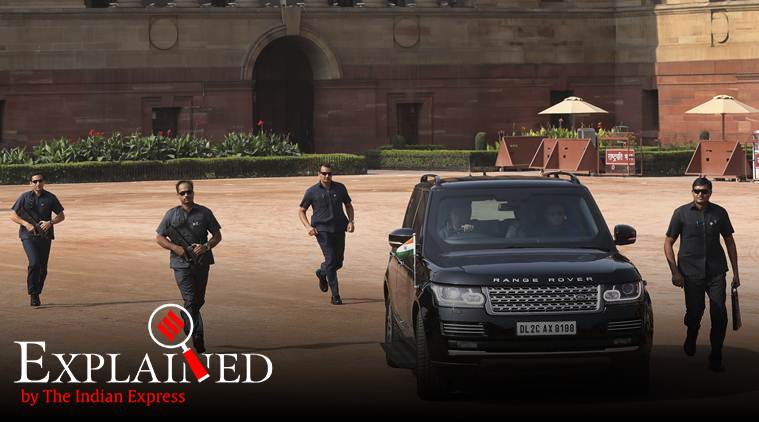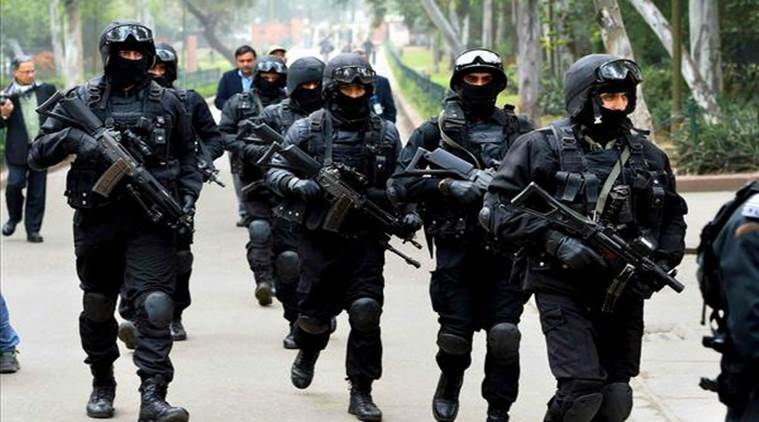The highest level of security cover is the Z-plus category, followed by Z, Y, and X categories. The higher the level of cover, the larger the number of personnel protecting the individual.
The Central government has withdrawn Special Protection Group (SPG) security cover for Manmohan Singh. The former Prime Minister will now be given Z-plus cover by the Central Armed Police Forces (CAPF), the umbrella term for seven security forces under the Ministry of Home Affairs, viz., the Assam Rifles, the Border Security Force (BSF), the Central Reserve Police Force (CRPF), the Central Industrial Security Force (CISF), the National Security Guard (NSG), the Indo-Tibetan Border Police (ITBP), and the Sashastra Seema Bal (SSB).
SPG and SPG Act
After Indira Gandhi was assassinated by her own security guards in 1984, the Rajiv Gandhi government decided to create a special cadre of security personnel for the Prime Minister.
In March 1985, following the recommendations of a committee set up by the Home Ministry, a special unit was created for this purpose under the Cabinet Secretariat. This unit, initially called the Special Protection Unit, was renamed as Special Protection Group in April 1985.
Subsequently, the Parliament passed The Special Protection Group (SPG) Act, which was notified in June 1988 “to provide for the constitution and regulation of an armed force of the Union for providing proximate security to the Prime Minister of India and for matters connected therewith”.
The SPG Act defined “proximate security” as “protection provided from close quarters, during journey by road, rail, aircraft, watercraft or on foot or any other means of transport” and to “include the places of functions, engagements, residence or halt”.
SPG protection was extended, apart from the Prime Minister, to “former Prime Ministers of India and members of their immediate families” through an amendment in the Act in the aftermath of the assassination of Rajiv Gandhi in May 1991.
Rajiv Gandhi had lost SPG cover after being defeated in the Lok Sabha elections of 1989. The Act was subsequently amended again in 1994 and 1999. In a case connected with the appearance of PV Narasimha Rao, who had then recently demitted office as Prime Minister, before a Delhi court, a Supreme Court bench of Justices M M Punchhi and KT Thomas ruled that the SPG Act was “very special in nature” and defined the scope of ‘proximate security’.
The court said: “…The will of the Parliament reflected in the Act is bold, unequivocal, comprehensive and wide in nature, no-where permitting withdrawal, limiting or proscribing of their proximate security statutorily conferred on the protectee… The expression ‘proximate security’ has to be given a purposive meaning, for, it could never have been intended by the Parliament that security would be restricted to places of functions, engagements, residence or halt on resorting to a literal meaning…The SPG protective cover…goes with the person of the protectee as the shadow would a man. It is for the SPG to devise how to render meaningful protection to the protectee…” (Commissioner of Police, Delhi & Anr Vs. Registrar, Delhi High Court 1996)
SPG personnel can be seen around the Prime Minister of India at all times. They wear safari suits in the summer and dark formal jackets in the winter along with reflective sunglasses and have a communication earpiece plugged in. Their weapons are often concealed.
Categories of security
Besides the SPG, VIPs in India are protected by other security forces as well. The levels of security cover are determined by the threat perception around the individual.
The highest level of security cover is the Z-plus category, followed by Z, Y, and X categories. The higher the level of cover, the larger the number of personnel protecting the individual. Roughly 24-36 personnel with automatic weapons are deployed for Z-plus category protectees and 16-20 personnel guard Z-category protectees.
The elite ‘Black Cat’ commandos of the NSG are deployed to protect VIPs for whom the threat perception is the highest.
Withdrawal of security
While the withdrawal of SPG cover to Manmohan Singh has been reported widely, successive governments have upgraded or downgraded the security cover of VIPs, including politicians, from time to time, depending on the latest assessment of the threat to them.
In August 2015, for example, the Home Ministry withdrew security cover to 30 individuals, including eight members of the family of former Home Minister Sushil Kumar Shinde, former Lok Sabha Speaker Meira Kumar and several other former ministers, including the 2G-scam tainted A Raja.
In its official communiqué, the Ministry said that the decision to withdraw the security cover of these protectees was taken at a meeting of the Security Categorisation Committee in July that year.
Earlier in 2009, when P Chidambaram was the Home Minister, the government had pruned the lists of VIPs in the Z and Z-plus categories moved several protected officials to the Y category and removed the security cover of several X category protectees.
Source: Read Full Article



